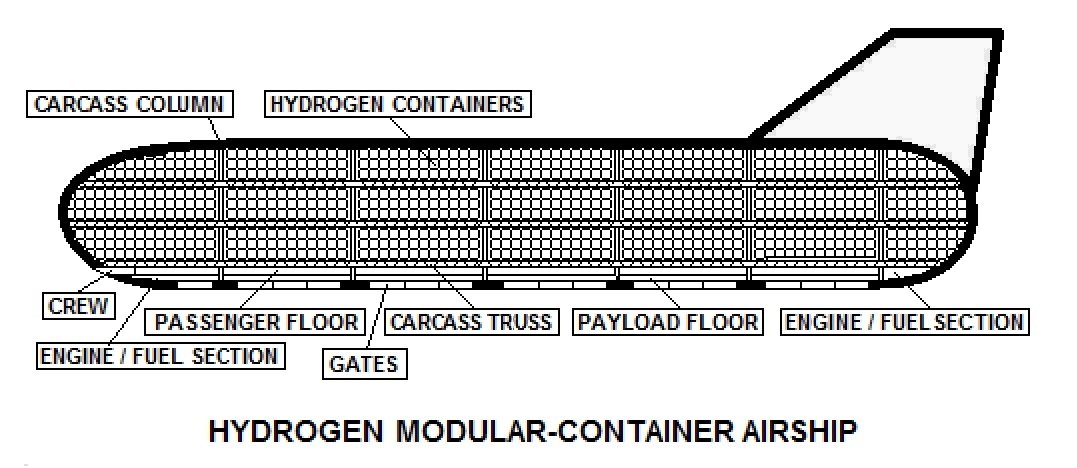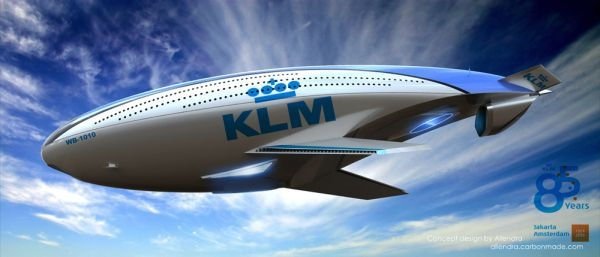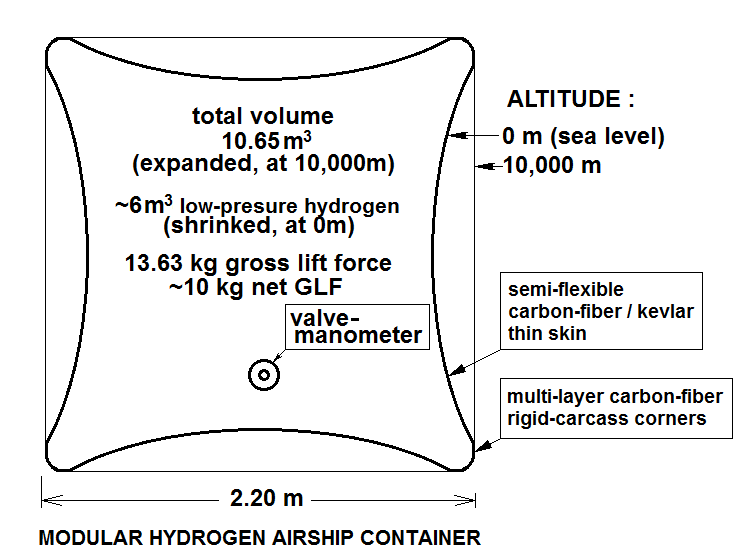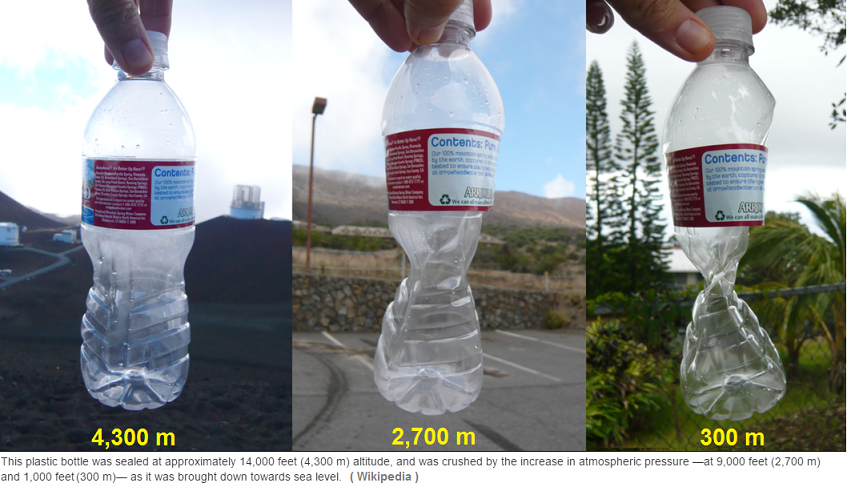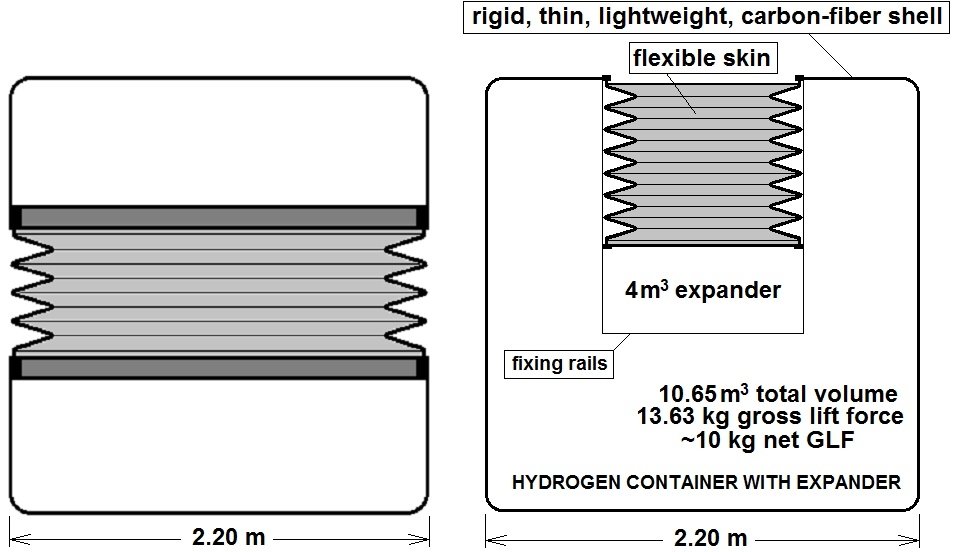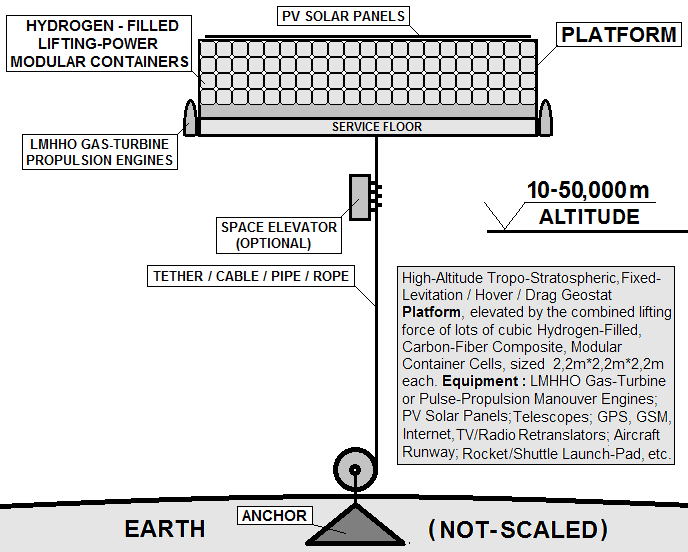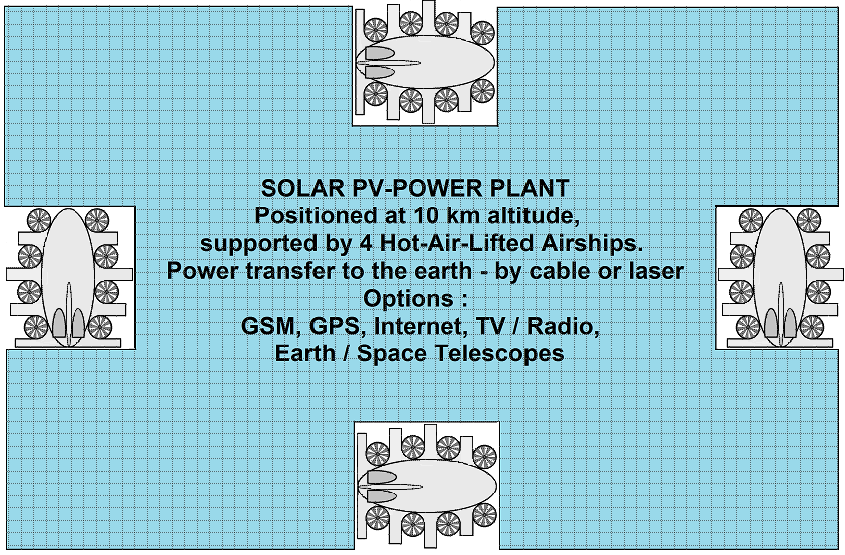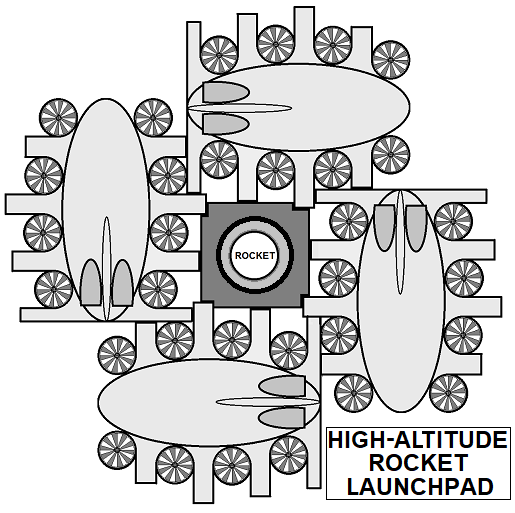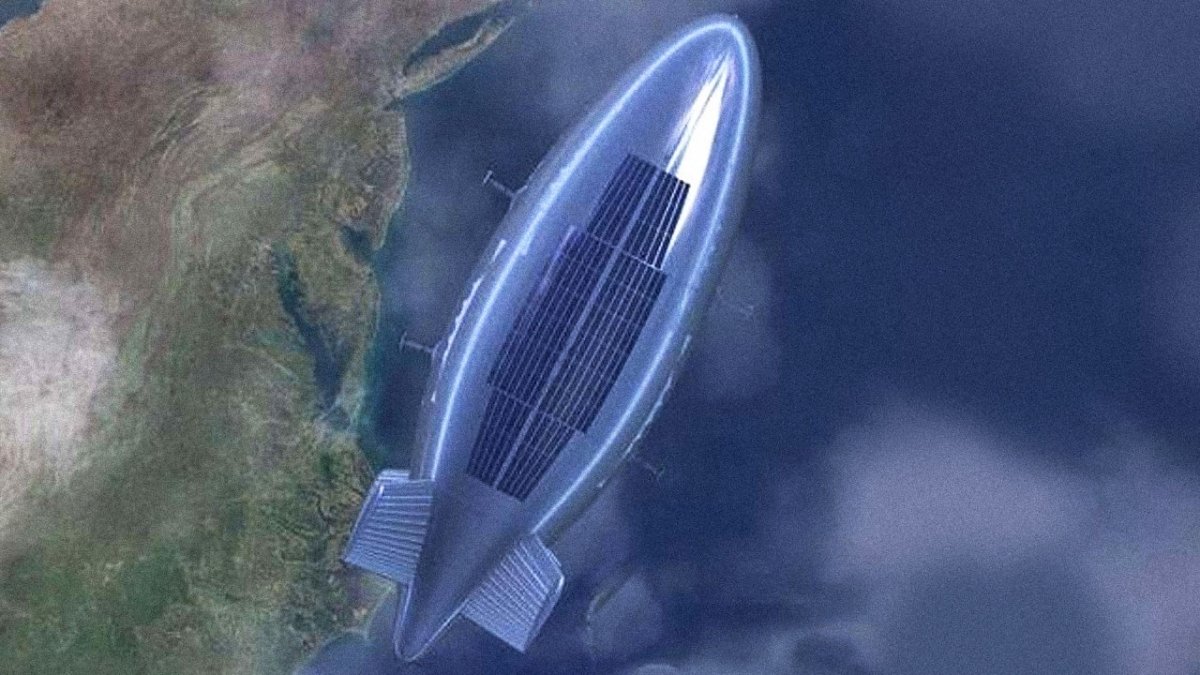AIRSHIPS AND AEROSPACE PLATFORMSBLOG /comments :
Lighter-than-air aircrafts, called AIRSHIPS, had their short, but glorious era in the beginning of the 20th century. This era ended tragically with the spectacular explosion of the HINDENBURG airship on May 6, 1937 in New Jersey, killing 36 people. An Airship or Dirigible is a type of Aerostat or lighter-than-air aircraft that can navigate through the air under its own power. Aerostats gain their lift from large gas bags filled with a lifting gas that is less dense than the surrounding air. Lighter-than-air aircraft can stay aloft for long periods and operate at high altitudes, and be scaled for varied payloads. The envelope of an airship may form a single gas bag, or may contain a number of internal gas-filled cells. An airship also has engines and crew and/or payload accommodation, typically housed in one or more "gondolas" suspended below the envelope. In early dirigibles, the lifting gas used was hydrogen, due to its high lifting capacity and ready availability. Helium gas has almost the same lifting capacity and is not flammable, unlike hydrogen, but is rare and relatively expensive. Significant amounts were first discovered in the United States and for a while helium was only used for airships by the United States. But usage of helium can reduce a rigid airship’s payload by more than half . Inflated with hydrogen, Hindenburg was able to carry 21,076 lbs of payload; if the ship had been inflated with helium, it could not have made the flight at all - LINK. Most airships built since the 1960s have used helium, though some have used hot air. Heated air is frequently used in recreational ballooning. According to the Ideal gas law, an amount of gas (and also a mixture of gases such as air) expands as it is heated. As a result, a certain volume of gas has a lower weight as the temperature is higher. The average temperature of air in a hot air balloon is about 100°C (212°F). Speaking about hot air as a lifting agent, our team can offer a 100% safe technology for on-board hot air lifting fluid production, using liquefied Modified OH (MOH) gas as a heating fuel. MOH gas (also called MHHO) is being produced on-land by water electrolysis, it is cheap, 100% clean, renewable and safe. Additionally, MOH performs amazingly ultrahigh temperatures, while heating some refractory materials, called UHTC. So we can reach significant thermal values, using tiny quantities of MOH gas fuel. https://fuels.alle.bg The Hindenburg disaster, killing 36 people (today's cars kill thousands of people every single day), and thus signing the end of the airship era, has caused by the extremely poor level of development of the technologies concerning the airship's construction materials as the exterior skin and interior cell dividers (cloth material !), the flammable paints and coatings, gas-leaking sealants and controlling instruments, and many more.
Here are some ideas of new possibilities to fully revive and update this tremendously useful aircraft technology.
If we put the hydrogen in smaller hermetically-sealed, separated, lightweight, inflatable containers (cells), sized for example ~11m3 (2.2x2.2x2.2m) each, or larger, the Hindenburg problem will be totally solved. The container's shell must be extremely lightweight, robust and flexible. It mustn't allow any hydrogen leakage or permeation.
A 11m3 container will have about 16 kg gross/ 10 kg net lifting force, so a 20 tons payload airship will need 3,000 such containers ( 100 containers occupy a floor area of 220 m2 or ~15mx15m). Once filled, containers will be sealed, and used in a continuous turnover for years.
Containers will be grouped and fixed to the carrier trusses of the airship's carcass and will act together to lift the ship. Containers can be made of thin and strong Carbon-Kevlar Fiber, Silicone Rubber, Graphene, Diamond-foil or else reinforced composite material, flexible enough to stretch and thus compensate the hydrogen volume's expanding at higher atmospheric altitude (4 times at 10,000 m). To minimize the expanding effect, our flexible containers could be put in a hyperbaric chamber, while filled with low-pressured hydrogen, in order to be preliminary shrinked before the flight, and then, after being risen to the high atmospheric altitude and low pressure, they will expand to the normal shape. Also, Vacuum container is a perfect modular lifting force solution, if a strong enough material is available to resist the atmospheric pressure outside the container. Relevant tests are upcoming. Such modular containers could be simple and easy for handle, loading and off-loading, and can be used for precisely loading and balancing the airship with as many containers, as much load we need to lift up. Precise lift-power balance could be reach also by on-board hydrogen production on-demand, out of Liquefied MOH storage tank, loaded on the airship. Hydrogen could be extracted out by vaporizing and splitting the LMOH through a Molecular Sieve Membrane, into pure hydrogen and oxygen. Both gases could be also used as fuel in Hydrogen Fuel Cells for on-board power generation and driving electric motors for propellers, etc. Container's Hydrogen content will be produced on the ground, almost at zero cost, by our high-effective water-electrolysis OH Power Plant ( https://solargas.alle.bg ). To avoid any dangerous contact between hydrogen and oxygen, containers will be filled first with water, then hydrogen will fully displace the water hermetically without any air residues. Same effect could be achieved by preliminary flushing with nitrogen or carbon dioxide. Hydrogen-Filled / Vacuum-Emptied Modular Lift-Power Containers Here are some more ideas for expanding containers for low-pressure (0.1 bar) hydrogen .
The "Accordion-type" bellows is made of flexible silicone rubber or of non-flexible carbon-fiber elements, connected by flexible rubber sealants. It allows stretching in a wide range, according to the specific atmospheric pressure at the relevant altitude, the airship is located at the moment. Being the Nature's smallest chemical element, hydrogen easily passes through almost all the materials.
Some kinds of silicone rubbers, together with the carbon-fiber, are probably the only materials which can stop the hydrogen's leakage, permeation, diffusion and material's embrittlement. We have observed this in our lab. This silicone rubber's property can be used for creating a reliable, fully sealed and safe container for hydrogen. Than the great Zeppelines' achievement, performed many times, to cross the Atlantic Ocean in 80 hours could be successfully replicated and upgraded to much larger payload capacity and faster speed.
It is amazing to read that Zeppelines' propulsion was effected by diesel engines ! Imagine what it means and counts in engine's and fuel's weight !
In a modern Zepp's version, a lightweight, ultra-compact and ultra-cheap clean fuel as liquefied MHHO / Ohmasa Gas (ultrasono-modified Browngas) with lightweight gas-turbine propulsion engines could be used. In fact, all technologies, fuels and materials for a Zeppeline's modern version are available now !
The impact for the world economy will be huge, considering that a container-cargo load could cross the oceans for hours, instead of a month, with the conventional sea-vessel carriers.
Also, in fact, a hydrogen-modular-airship WILL NEVER CRUSH. TROPO-STRATOSPHERIC GEOSTATIONARY SUB-ORBITAL PLATFORM FOR SURVEILLANCE, GSM/GPS/NET/TV/RADIO, PV SOLAR PLANT, JET/ROCKET LAUNCH Except as a long-distance and heavy-load shipping aircraft, a hydrogen-lifted airship or a system of several connected airships, located high enough ( 10-50,000 m), at the so called "Stratopause" atmospheric layer, where temeperatures are relatively higher ( 0 deg.C ), at a fixed point of levitation, to be far from the atmospheric turbulеnces, can be used as a mobile or stationery-fixed platform for telecommunications, GPS, GSM, TV/Radio services and observations, and even as a high-altitude Aircraft Runway and start base for launching Space Shuttles and Rockets. Platform will be equipped with own LMHHO Gas-turbine or Pulse Engines for maneuvers, and optionally, with a ground-anchored Tether with Space Elevator attached, for frequent transportation of stuff and smaller loads supplies from the ground to the Platform. The price of such a platform and it's services will be much lower than the price of launching rockets with space satellites and supplies from the Earth's surface. Hydrogen gas for the lifting modules, and Liquefied Modified Oxy-Hydrogen (LMHHO) for fueling the gas-turbine/pulse-detonation engines, will be produced at almost zero cost by an autonomous, water-fueled HHO Power Plant on the Earth's ground. Pure Hydrogen will be filled in hermetic, expandable, safe, modular hydrogen containers, used as lifting-power modules, safe and easy for handle and loading-offloading down the Platform, in such a precise quantity, needed to maintain the exact fixed Platform's altitude level and point of levitation above the Earth. Same job ca be performed by a strong tether, anchored down in the earth's ground. Alongside with the tether, a cable could be stretched and attached to the tether for transferring power from the eventual large PV Solar Plant on the Platform's roof to the ground, and also Pipes for continuous Air and Water supply and Hydrogen transfer for on-board filling or emptying the lifting containers. The Liquefied MHHO gas will be transferred and stored in LNG bottles onboard the Platform and used as a compact, lightweight, powerful and safe Fuel for the Platform's propulsion engines. Main Platform's supplies will be delivered from the ground by cargo/passenger Hydrogen/LMHHO Airship Shuttles, at a very low cost. Hi-Altitude 40km Stratospheric Aerostatic Satellite Platform with PV-Solar Power Plant "FLYING HOME" AIRSHIPPersonal Airplane ? Not a big deal. Just look at THIS ... SBC ( 'See Behind The Curve' ) GPS HIGH-DEFINITION SERVICE The Hydrogen/Vacuum-Lifted Geostat Low-Orbit PLATFORM could provide a new, special High-Definition GPS Service. Unlike the existing GPS services, the HD GPS will scan by radar or HD-camera from a lower, closer-to-Earth orbit, or by the signal-re-translating help of Drones, and thus will allow All road vehicles to be watched and reported along a definite part of the road. Thus a subscribed driver can clearly see on his car's Navi-screen what is ahead on the road in details. even there is no physical visibility at all. SBC (See-Behind-the-Curve) system would provide such an information no matter what conditions or obstacles stay in the road ahead the driver - a curved canyon, large vehicles or bad weather - fog, rain, snow, etc. Also the same system could help the road police to detect the speeding, wrongly cruising or wanted cars and to organize their detention. It will also provide with a detailed digital on-screen road map of the road and the attached areas, with marked filling stations, motels, etc. road objects ahead, and warnings about car accidents ahead on the road, or for fire, ice, flood, landslide, oil or else spills, animals, etc. obstacles on the road. Larger Drones, ruled and followed by the Platform, could be also used as couriers for fast delivery by air of essential medicines, tools, etc., even injured people, as ambulances, in case of emergency,
We believe all these advantages will help for a great decrease of the road accidents and injures, and will save thousands of human lives. HD GPS Subscription will also provide with additional interactive telecommunication services, as Radio/TV/Internet/GSM, and can be a powerful Advertisement Media as well, which makes it a great business. China Just Flew a 250-foot near-space Airship to near the top of the Earth's Atmosphere. China’s first new type near-space airship “Yuanmeng” was successfully launched in Xilinhot, Inner Mongolia on Oct 13th, 2015. The airship is flying at the designed height and runs well.“Yuanmeng” is a colossal silvery airship and occupies 18,000 cubic meters. With the lift of helium, it rose to the air, and then it is mainly powered by solar energy. The airship will stay near space for 48 hours accordingto the plan.The solar-powered behemoth can stay airborne for half a year and requires no fuel to get it more than 12 miles into the air ; the sun powers it once it reaches its cruising altitude. Airships predate airplanes, but have been largely supplanted by them. However, they remain superior for pretty much anything that doesn’t require the speed of a jet engine. They can hang around for months, they can carry large payloads, and they can fly way higher than most planes, because an airplane’s wing runs out of air to support it at such high altitudes. During its estimated two-day trial, the airship launched from Xilinhot, Inner Mongolia, bristling with communications gear—"data relays, high-definition observation and spatial imaging" equipment—says the Chinese People’s Daily. The sedentary nature of the airship allows it to sit up at the edge of space and watch. It can surveil the ground, and it can also act as a base station to command fleets of military planes. In a pinch, the Yuanmeng airship could act as a stand-in for communications satellites. Operating higher in near space means that the Yuanmeng would have constant line of sight over a hundred thousand square miles - an important requirement for radar and imaging. Increased sensor coverage means increased warning time against stealthy threats such as cruise missiles, giving Chinese forces a greater opportunity to detect and shoot down such threats. It would also be harder for fighters and surface-to-air missiles to attack near space objects. Near space is the region of Earth's atmosphere that lies between 20 to 100 km (65,000 and 328,000 feet) above sea level. Impeded by the height and air density of the region, traditional aircrafts find it difficult to enter the region, said Yu Quan, an academician of Chinese Academy of Engineering. The airship can carry out multiple tasks.“The biggest challenge for the nearspace airship is the big temperature difference in the day and night,”Yu said.
Airships can solve many problems. In much the same way that regular oceangoing ships carry huge loads of goods from continent to continent, airships are also good for transporting goods. Even smaller airships can carry loads of 50 tons. And perhaps they could even replace passenger airplanes as providers of low-cost air travel. They might not be as fast, but they could be a lot more comfortable. LINKWe are in preliminary conversations with several potential investors, for developing an Integrated Aerospace Project for low-cost :
- LMHHO Aircraft/Two-Way-Shuttle for Hypersonic (25+ Mach) Space-Tourist and Business Passenger Travels (London-NY in 20 min.), - Hydrogen/LMHHO Cargo/Passenger Large Airship Shuttle, - Hydrogen/LMHHO Geostationary Sub-Orbital Platform Station for "See-Behind-Curve" GPS HD Service, Telecom, Telescope Earth/Space Observation, Rocket Launchpad, High-Radiation PV Solar Plant, Jet Runway, Space Elevator, etc. | |
